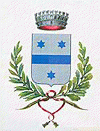San Michele al Tagliamento (San Michele al Tagliamento)
 |
SS14, one of the main State Highways (Italy), passes through the commune, whose frazione of Bibione is a popular tourist resort. The neighboring municipalities are Caorle, Fossalta di Portogruaro, Latisana, Lignano Sabbiadoro, Morsano al Tagliamento, Portogruaro, Ronchis and Varmo.
The first traces of human settlement date back to the 4th and 3rd centuries BC, when the area (now part of the municipality of San Michele al Tagliamento) was populated by the Adriatic Veneti.
From 181 AC onward, the Romans' colonization marked the beginning of the land reclamation and agricultural development of the entire area. Since the end of the 18th century, archaeological excavations have led to the discovery of black and white mosaic floors, copper coins, glass fragments and pottery, which can be traced back to the Roman imperial period.
Map - San Michele al Tagliamento (San Michele al Tagliamento)
Map
Country - Italy
 |
 |
| Flag of Italy | |
Italy was the native place of many civilizations such as the Italic peoples and the Etruscans, while due to its central geographic location in Southern Europe and the Mediterranean, the country has also historically been home to myriad peoples and cultures, who immigrated to the peninsula throughout history. The Latins, native of central Italy, formed the Roman Kingdom in the 8th century BC, which eventually became a republic with a government of the Senate and the People. The Roman Republic initially conquered and assimilated its neighbours on the Italian peninsula, eventually expanding and conquering a large part of Europe, North Africa and Western Asia. By the first century BC, the Roman Empire emerged as the dominant power in the Mediterranean Basin and became a leading cultural, political and religious centre, inaugurating the Pax Romana, a period of more than 200 years during which Italy's law, technology, economy, art, and literature developed.
Currency / Language
| ISO | Currency | Symbol | Significant figures |
|---|---|---|---|
| EUR | Euro | € | 2 |
| ISO | Language |
|---|---|
| CA | Catalan language |
| CO | Corsican language |
| FR | French language |
| DE | German language |
| IT | Italian language |
| SC | Sardinian language |
| SL | Slovene language |















